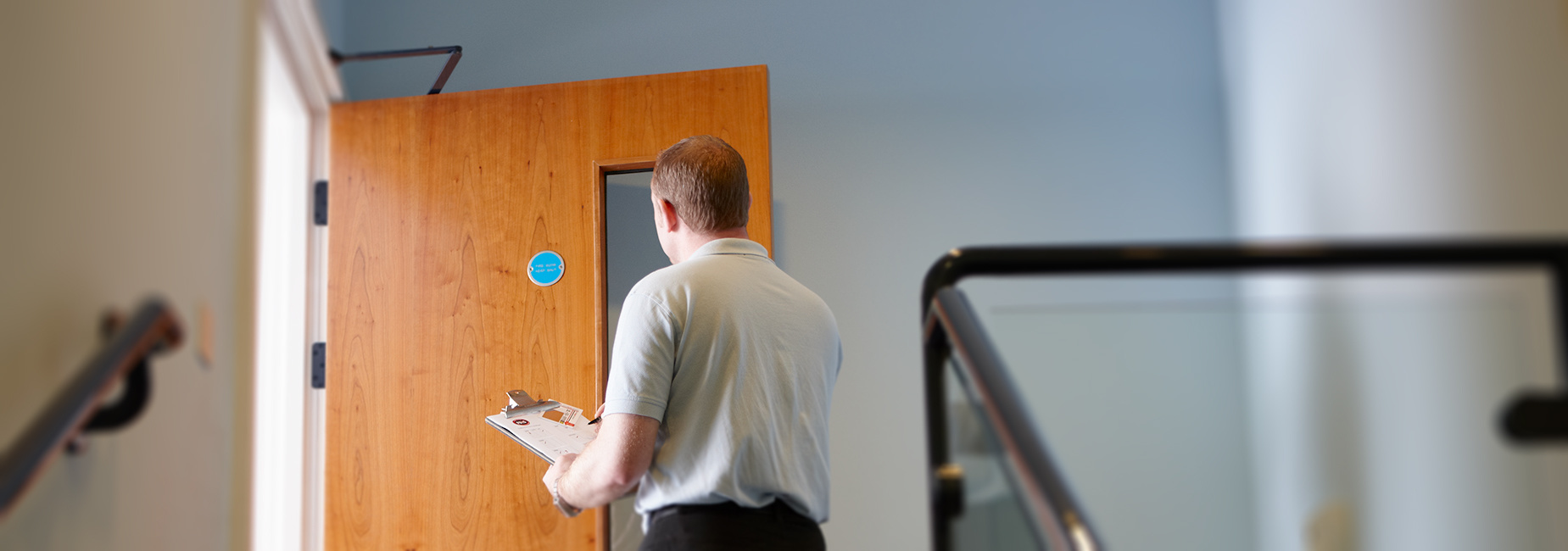There have been indications that the upcoming Fire Safety Bill might include a requirement for fire doors in all blocks of flats to be checked on a quarterly basis. It’s believed the Ministry of Housing, Communities and Local Government is collating the opinions of building owners about whether it’s realistic to expect fire door inspections to be completed every three months.
At the moment, there’s no set frequency for how regularly fire doors need to be checked. It forms part of the wider requirements to protect building users from fire but there’s no prescribed timescale about how often such checks should happen. Recent Government guidance refers to the need for fire doors to be routinely checked and maintained but whether a specific frequency will be stipulated in the final legislation remains to be seen. While some building owners might regard it as too prescriptive, there have also been opinions expressed that quarterly checks might not be regular enough in very busy areas where fire doors are in frequent use.
Making sure your fire doors are safe
Whether a frequency ends up being specified or not, the core approach to ensuring fire doors are safe remains the same. Fire door specification and installation must be done by a competent person; incorrect installation in any way can mean that a certified fire door’s effectiveness will be compromised. Inspections must then be carried out periodically by a competent individual to ensure all fire doors remain fully compliant.
It’s also important that building owners are in the habit of conducting regular simple visual checks in case any problems crop up between inspections. Building users should also be encouraged to keep an eye out for anything that might be a cause for concern, and are made aware of who to report their concerns to so action can be taken quickly.
What types of visual checks can you do?
Start off by looking to see whether there are any obvious signs of damage to the fire door and frame. Are there any cracks or parts that don’t look secure? Check that the door and frame are fitted securely and are level. Is there an even gap around the door? Generally there should be a gap of about 3-4mm; the specific measurements will be included in the manufacturer’s installation instructions or fire certificate data sheet. Take a look at the condition of the intumescent seals around the door too. They must be undamaged, fitting snugly all the way round the door to ensure that fire and smoke cannot get through.
Next, see how smoothly the fire door opens and closes. Check that you can open the fire door fully, then see what happens when you let it go. Does it close quickly and smoothly (without slamming) or is it catching on anything? Double check that the locks, latches and lever handle mechanisms all work properly and that the fixings are in good condition and secure. Inspect the hinges to see if they fit well. Are there any visible indications of wear or screws missing that suggest the door might not be able to do its job properly?
If the fire door fails on any points, no matter how minor they may seem, they must be quickly sorted out as the effectiveness of the door is likely to be compromised. Check the certification label’s located on the fire door too. You’ll usually find it on top of the door or below the bottom hinge. If it’s been damaged or painted over, or isn’t there at all, it invalidates certification. Make sure that all fire doors are clearly marked with the correct signage too.
Would you like more information about fire door inspections?
You’ll find an in-depth breakdown in this guide from the Fire Door Alliance about best practice in specifying, installing, using and maintaining fire doors. We’re also pleased to announce we are adding fire door maintenance to the portfolio of services we offer to our customers so please contact us if you would like to find out more about how we can help you.
